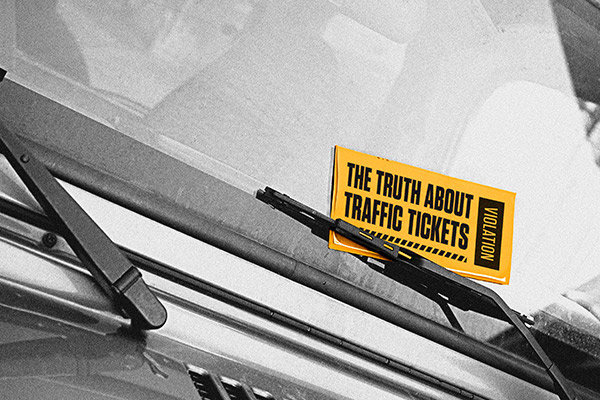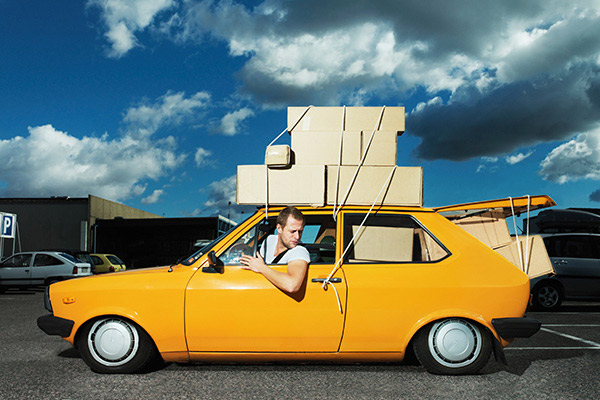The holiday season is a wonderful time to hit the road for a visit with family and friends. But it often means long drives in heavy traffic. To help you stay safe (and sane) on the road to your destination, here’s a list of defensive driving tips to prepare you for the drive.
Planning: The First Line of Defense
According to the National Safety Council (NSC), defensive driving means taking reasonable action to prevent a collision. But defensive driving starts before you even get on the road. Checking weather and road conditions in advance helps you plan a route and know what to expect along the way. It’s also important to pack the car with basic supplies. A first aid kit, flares, snacks and blankets ensure you’re ready for emergencies on long drives.
Traffic Watch
The holiday season is not only one of the busiest travel times, but this year’s low gas prices mean many people will probably choose to drive. And more cars on the road means a higher chance of fatal crashes, so it’s extra important to stay alert this year and learn to spot and avoid hazards using these NSC-approved tips.
– Defensive driving instructors recommend checking your mirrors every three to five seconds and continuously scanning ahead for possible dangers.
– Always give the right of way to fellow motorists, but be prepared to react to unexpected lane changes and turns.
– During heavy traffic, keep a safe distance from other vehicles and give yourself ample response time by slowing your speed.
– Look for signs of impaired, distracted and even aggressive driving and develop techniques like deep breathing to keep calm under pressure.
Collision-Proof Your Drive
 The NSC has identified six unsafe driving behaviors that most often lead to collisions. By understanding each infraction and learning how to avoid them, holiday travelers can develop safer driving habits and collision avoidance techniques.
The NSC has identified six unsafe driving behaviors that most often lead to collisions. By understanding each infraction and learning how to avoid them, holiday travelers can develop safer driving habits and collision avoidance techniques.
1) Improper speed. Keep a close eye on both the posted speed limit and weather conditions. Even if you’re obeying the limit, you may need to slow down to drive safely on a wet or icy road.
2) Violating right of way. To make sure you’re yielding properly and following all traffic signals and stop signs, drive at an appropriate speed to give yourself time to react and take a moment to scan intersections before entering them.
3) Driving left of center. Patience and foresight are key to avoiding this unsafe behavior. Slow down and stay behind cyclists or pedestrians until it’s safe to pass them, and watch the road ahead for animals or other obstacles so you can brake or safely steer around them instead of swerving into the other lane.
4) Turning improperly. Always use turn signals to let other drivers, pedestrians and cyclists know where you’re going. (Most traffic laws require you to signal within 100 feet of a turn, but you should check local regulations.)
5) Passing improperly. When passing, be sure to use your turn signals and check your blind spots, as well as in front of and behind your vehicle. You should be able to pass without getting too close to the car ahead or going over the speed limit; if you can’t, it may not be safe to pass.
6) Following too closely. At low speeds, this can lead to irritating fender benders; at high speeds, it can be deadly. Give yourself at least three seconds of distance between your own vehicle and the one ahead. If someone is tailgating you, don’t speed up! Maintain your speed and move over to let him or her pass if and when it is safe to do so.
Did you know? GEICO policyholders who complete defensive driver training could qualify for discounts on their auto insurance, depending on the state they live in. To learn more about defensive driver courses in your state, visit geico.com/ddc.
By Katherine Palbom & Kristen Koch










Jered Bickford says,
Some good tips to help raise awareness.
LAZARO says,
To always include having a certified fire extinguisher in your vehicle, besides the misc. supplies is quite helpful in an event where it may save the vehicle, your life and passengers.Another item which will allow you getting off the road quickly, driving to a safer location or next exit is a couple of emergency flat fix can, <> so that any time spent by the side of a road in heavy traffic is minimal. Of course a list of emergency vehicles, or tow services in the area, which can be easily be kept in glove compartment or in your cell phone, will be handy, again minimizing any side of the highway or busy traffic area, thus avoiding a possible dangerous situation waiting for other help…
Paul Mattingly says,
Thanks for the reminder
P. Muthyala says,
Very helpful hints. Wish all drivers have the same exposure to these helpfull hints of safe driving
Thanks a million.
SAFE DRIVING
Richard C. Jackson says,
Thanks for the e-Mail regarding safety. Some time ago in my government office, I spoke to a paralegal about safety because I was in charge of vehicles for the region. He said it’s important that people don’t change lanes while in an intersection. He said there were a lot of accidents caused by that.
A vehicle safety officer said that when making a left turn in an intersection, keep your front wheels going straight forward before making the turn, so if you are, God forbid, struck from behind, your vehicle won’t be shoved into the oncoming traffic lane.
Bless you and God bless America.
Stefan Vlassek says,
Thank You for the good advise,
there are to many unnecessary accidents .
Merry Christmas.
Robert Buzby says,
Suggest : When on a trip, stop every 2-3 hours to stretch and relieve oneself.
Don’t drive more than 6-8 hours w/out proper rest. Sleep 6-8 hrs and drink and
eat healthy food. Switch drivers as often as possible if available.
Georges Beausejour says,
I find that article very helpful.
Mary serrano says,
Those of very good reminders they should be published so that all drivers could see this information thank you
Ishwar N Garg says,
I follow these rules and agree with the policy of defensive driving. I will recommend my friends to be moe careful during holiday / winter season. Thx
rodolfo lorayes says,
To add more safety precautions , REMEMBER THE KEY WORDS B L O W A G
as in . Check the following before driving.
Brake—-See to it that your break are working and in good condition, check your level of break fluid.
Light- Your head , tail and signal lights are clean and operational
Oil- All your oil requirements are at least at the Maximum level, like engine oil, hydraulic oil, and all under chassis lubricants are sufficient for the long trip.
Water Your coolant or anti freeze must be filled-up or refill with a new gallon at least.
Air-Check your tire pressures , see the manual if you forget the right one.
Okey, that’s about all, Have a happy and safe Holidays on the road.
Gas.
Annette Silvis says,
Thank you for providing this type of information. It gives us a chance to refresh our skills. The Defensive Driving Course that I took was wonderful, and I feel safer with me and on the road now after taking it. It was a great refresher for me!
Have safe travels throughout our Christmas and New Years Seasons.
Mary Ellem says,
I wish People would use middle lane on 95 so on coming traffic could merge on. Thanks for the Tips. Very good
Lara zuberi says,
Most important: no texting while driving
Eric says,
Always good advice.